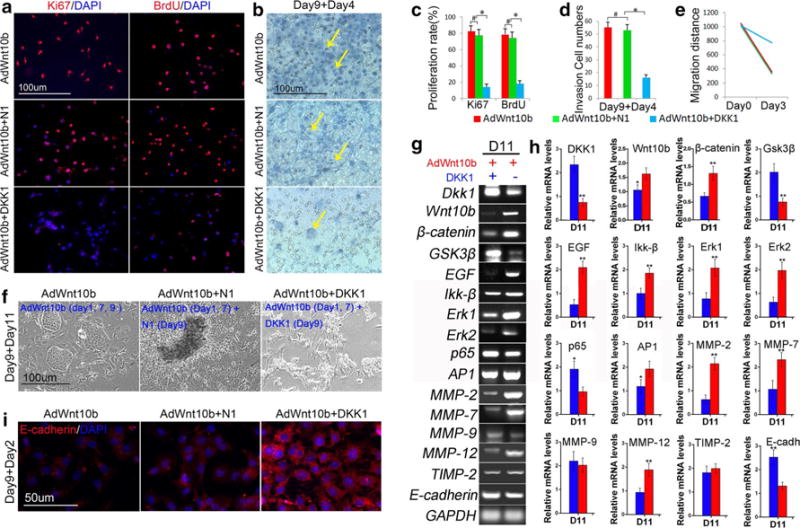Fig. 6.

Wnt antagonist Dkk1 impaired the transformation effect triggered by Wnt10b in JB6P− cells. a, c Immunostaining and statistical analysis revealed that Ki67- and BrdU-positive cells were decreased after sequential two doses of AdWnt10b combined with one dose of Dkk1 treatments (AdWnt10b + DKK1) compared within the AdWnt10b or AdWnt10b + N1-treated cells. b, d H&E staining and statistical analysis revealed that the number of the cells invaded to the lower part of transwell system was significantly decreased in AdWnt10b + DKK1-treated group compared with the AdWnt10b or AdWnt10b + N1-treated groups. e Bar chart showed that cell migration rate was significantly decreased in AdWnt10b + DKK1-treated group compared with the AdWnt10b- or AdWnt10b + N1-treated groups. f Phase-contrast microscopy showed multilayer growth in AdWnt10b + N1-treated group and cell transformation abrogation in AdWnt10b + DKK1-treated group. g, h RT-PCR and bar charts revealed significantly decreased mRNA levels of Wnt10b, β-catenin, EGF, Ikk-β, Erk1, Erk2, MMP-2, 7, and 12, and dramatically increased mRNA levels of Dkk1, Gsk3β, p65, and E-cadherin at different time points in AdWnt10b + DKK1-treated groups when compared to those of the AdWnt10b + N1-treated groups. i E-cadherin expression was remarkably increased in AdWnt10b + DKK1-treated group compared with the AdWnt10b- or AdWnt10b + N1-treated groups. n > 5, *p < 0.05, **p < 0.01
